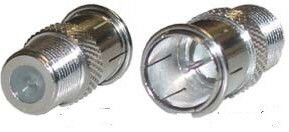Van, you mentioned:
"For the money and fewer headaches I would go with a meter that works with the dpp lnbfs that dish has ..."
Do you know of such a creature? I've never heard anyone who can use any meter to peak in a DPP lnb. To my knowledge, the best signal strengths can ONLY be achieved by peaking in using a DP lnb then swapping in a DPP lnb, after you've locked the dish.
If anyone knows of a meter that can peak in DPPs, let me know!
Oh, and Dude2: I wouldn't sweat it. I've used plenty of those little cheapy 8 dollar inline analog meters, and they work great. Perhaps he said they are 'they way to go' because they are about 1/20th the cost of other meters... Hehehe You really are not supposed to peak in a dish on a single transponder anyway, unless the customer only wants ONE channel, LITERALLY. Then you could peak that transponder to it's max. But not all transponders can reach 100's, no matter what you may try with peaking. If you try to peak to a specific weak transponder on 129, then you would be sacrificing a little strength on all other transponders on all other satellites.


